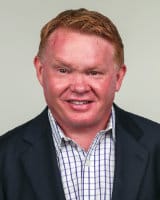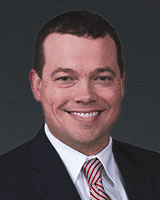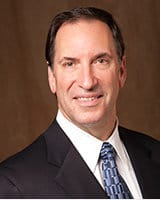
Suppose that when you begin your dental career that you will have to check a box like one of these:
- Yes, please endow me with $14,000,000 extra cash at the time of my retirement
- No thanks, keep your $14,000,000 and assume control of my profession while you’re at it
But believe it or not, while you’re not given this form with this questionnaire, you will face this decision when you enter the practice of dentistry. I realize that it seems absurd to ask a dentist if he or she would like to have $14,000,000, more or less, when they retire, but the question and the outcome is there, whether we’re aware of it or not.
Perhaps the best way to explain this mystifying proposition is by relating a true example of practice finances and how these revelations were discovered. Last year in New Orleans, I was having breakfast with a lender for practice acquisitions and asked him in passing why large corporations buy and set up dental practices. He pointed out that while they could park their money in a cash account and earn 1-percent interest, they discovered that they could get a 20 percent or better rate of return on their investment from ownership of dental practices. I found that hard to believe, if not totally absurd! How in the world could anyone expect to make a 20-percent investment return in today’s market? Even Bernie Madoff didn’t offer that kind of return.
To satisfy my morbid curiosity, I examined a practice we were marketing at the time to see what rate of return could be realized. The practice had revenues of $1,170,000, with hygienists producing $315,000 of the gross and the purchaser projected to do $855,000 in revenues. I know that sounds like a lot of work for one dentist to produce, but if the purchaser worked five days per week for 45 weeks per year, it would only require daily collections of $3,800 - an amount that should be easily achievable. As the purchaser gathered speed and confidence, this production level could be achieved in a four-day week working 45 weeks per year.
Another issue that purchasers are very concerned about is how to afford the payments to buy a practice. To help dispel the sticker shock, I like to point out a very interesting relationship. Consider the $300,000 income from the hygiene department of this practice and deduct the salaries for the hygienists of $130,000. You have a profit from the hygienists of $170,000 per year, which is more than ample to cover the $120,000 per year in loan payments. So in reality, the hygienist is paying for the practice one and a half times each month. What could be nicer than that? Well, I’ll tell you. That hygiene profit covers the loan payments each month for the practice and the building! So if the buyer is worried about the price of entry into their own practice, let the hygienist pay for both the practice and the building as in this practice.
Now, let’s get back to understanding those ridiculous profits we brought up. Just how are they figured? First, it’s important to understand precisely what is meant by the term “profit.” Profit is not the pay for the work one does. Compensation is pay. Profit is money that is over and above what a business owner earns for the work they do. Profit is the icing on the cake. It is the return on the purchaser’s investment.
Using the example of this actual practice, here’s how we compute the actual practice profit.
The total investment in this case is $749,000 for the practice purchase plus another $56,000 in working capital for a total loan of $805,000. Divide the profit of $213,000 by the investment of $805,000, and you have a return on investment of 26 percent in the very first year! And remember, that’s over and above the compensation of $300,000 the purchaser received for the work they did.
You’re probably wondering about where are the payments for the loan coming from. The payments are being paid out of the profit, so we’re using part of the practice profit to pay those payments, which remember, are being paid by the hygienist one-and-a-half times over for the practice and the building combined. And it gets even better! Besides having the hygienists pay the payments for us, in practically every practice sale, the entire price of the practice is deductible and/or depreciable. So before you figure how much you owe in income tax, you will subtract the tax deductions and depreciation for that year, which is how much income on which you didn’t have to pay tax. In this particular example, the purchaser had deductions of $103,000, the amount on which they didn’t pay tax – resulting in federal and state tax cash savings of approximately $43,000. This figure will reduce and finally disappear as depreciation runs out. The loan payments will also end when the practice and building are paid for, and then those $120,000 payments will go into the purchaser’s pocket.
To keep things simple and enable us to compare apples to apples, let’s just assume that fees, production and overhead will remain constant throughout a 33-year career we’re going to compare. Let’s see what those annual profits, less the depreciation benefits as they decrease and expire, can do when invested for 33 years at only 3 percent interest compounded. After 33 years, the profits with compounding interest, will amount to just over $10,000,000. Check the first box to get this result.
For another point of view, let’s see what happens when we check the second box and politely decline the $10,000,000 benefit and go to work for corporate dentistry. You’re thinking, “What’s so bad about that? I get a paycheck and don’t ever have any debt. How wrong can that be?” Well first off, we paid our purchaser owner 35 percent of their collections as salary, but corporate dentistry scales are somewhat less, usually around the 25-percent mark. So first off, a corporate dentist who produces the exact same amount of revenues over a 33-year period will earn somewhere around $4,000,000 less for generating the same revenues as our purchaser did. Oh, and remember that corporate dentistry participates in many reduced-fee plans, which means that the employee might have to produce one-third more dentistry in his or her career to generate the same revenues.
Corporate dentists forfeit the profit that a purchaser owner will collect. There’s no profit, no compounding interest, no tax benefits, no equity and no control over one’s career. You may not be able to use the lab of your choice or supplies or your choice, or even choose your own assistant. You might not be able to get health insurance or disability insurance of your choice. You may have to meet quotas of production that could exceed what our purchaser owner is comfortably producing. You may have to use high-pressure sales techniques to sell treatment. You could be dealing with many issues that are not to your liking that the purchaser owner does not.
Another factor that is not readily apparent is that when dentists work for corporate dentistry that corporate dentistry will gain control of the dental profession. When the medical profession got absorbed by hospitals and insurance companies, physicians who thought they were getting a safe and easy alternative to running their own practices became very frustrated with the results. But too bad, the toothpaste was already out of the tube, and it wouldn’t go back in.
In comparing owning your own practice to being a corporate employee, there are some key considerations to think about. First, the owner will have accumulated $10,000,000 in accrued profits and compounded interest that the corporate dentist did not receive. The owner dentist will also have received $4,000,000 more in compensation for doing the same amount of production and not be subject to low fee schedules that require more production for the same collections. Secondly, the owner will have control over all measures of the their practice, including the staff, treatment planning, the laboratory of choice, materials of choice, insurance benefits, retirement plans and contributions and many more. Corporate dentists rarely, if ever, have control over any of these key points.
So as you start your career, you now know the rewards that are yours to claim or forfeit and control of the dental profession is moving toward the fork in the road of a profession owned by professionals or a business controlled by business owners. Decide carefully when you check that box.

 Add me to your address book
Add me to your address book



